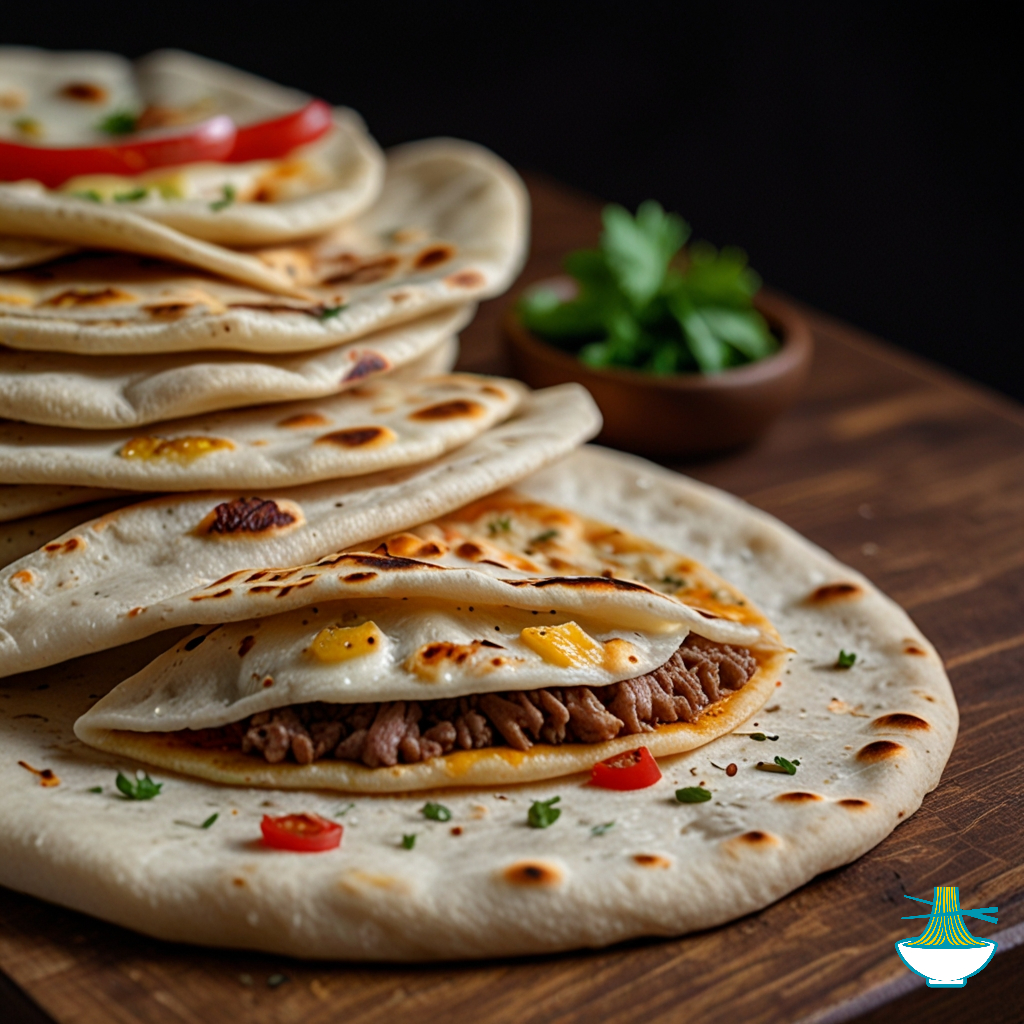Gözleme is a traditional Turkish flatbread, thin and unleavened, filled with savory ingredients like meat, cheese, or potatoes. Its origins trace back to Turkish nomads who made it as a portable meal. Today, gözleme is a beloved street food and homemade dish, cherished for its versatility and rich flavors.
Ingredients:
- 2 cups all-purpose flour
- 1/2 teaspoon salt
- 1/2 cup water
- Filling of choice (spinach and feta, minced meat, cheese, etc.)
- Olive oil for cooking
Method:
1. In a mixing bowl, combine flour and salt. Gradually add water and knead until a smooth dough forms.
2. Divide the dough into equal portions and roll each portion into a thin, round sheet.
3. Place desired filling on one half of the dough, leaving a border around the edges.
4. Fold the other half of the dough over the filling, sealing the edges by pressing with your fingers.
5. Heat a non-stick pan over medium heat and lightly grease with olive oil.
6. Cook the gözleme on each side until golden brown and crispy, about 2-3 minutes per side.
7. Serve hot and enjoy your delicious gözleme!
Nutrition Value:
1. All-Purpose Flour (2 cups):
- Calories: Approximately 800 kcal
- Carbohydrates: Approximately 168 grams
- Protein: Approximately 22 grams
- Fat: Approximately 2 grams
- Sodium: Negligible
- Cholesterol: None
- Nutritional Benefits: Provides energy from carbohydrates and some protein, but low in fat and lacks significant vitamins and minerals unless enriched.
2. Salt (1/2 teaspoon):
- Calories: Negligible
- Carbohydrates: Negligible
- Protein: Negligible
- Fat: Negligible
- Sodium: Approximately 1150 milligrams
- Cholesterol: None
- Nutritional Benefits: Provides flavor enhancement; necessary for electrolyte balance but should be consumed in moderation due to its high sodium content.
3. Water (1/2 cup):
- Calories: Negligible
- Carbohydrates: Negligible
- Protein: Negligible
- Fat: Negligible
- Sodium: Negligible
- Cholesterol: None
- Nutritional Benefits: Essential for hydration and bodily functions; contributes to dough formation and texture without adding extra calories or nutrients.
4. Filling (e.g., spinach and feta, minced meat, cheese, etc.):
Nutritional values will vary depending on the specific filling chosen. Here's an example for spinach and feta:
- Calories: Varies
- Carbohydrates: Varies
- Protein: Varies
- Fat: Varies
- Sodium: Varies
- Cholesterol: Varies
- Nutritional Benefits: Spinach provides fiber, vitamins A, C, and K, folate, iron, and calcium. Feta cheese offers protein, calcium, and vitamin B12, but is high in sodium and saturated fat.
5. Olive Oil for Cooking:
- Calories: Approximately 120 kcal per tablespoon
- Carbohydrates: Negligible
- Protein: Negligible
- Fat: Approximately 14 grams per tablespoon (mostly monounsaturated)
- Sodium: Negligible
- Cholesterol: None
- Nutritional Benefits: High in heart-healthy monounsaturated fats, which may help reduce the risk of heart disease. Contains antioxidants and anti-inflammatory properties.


Comments